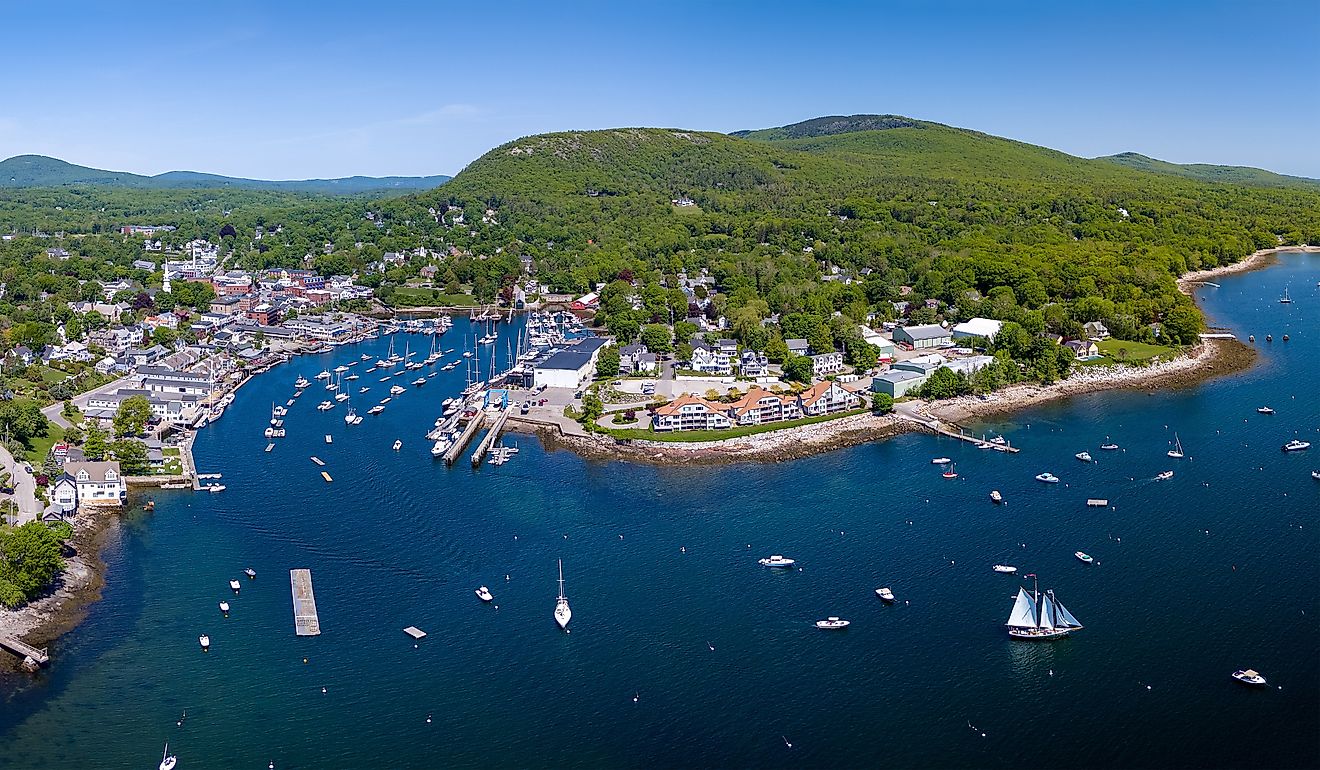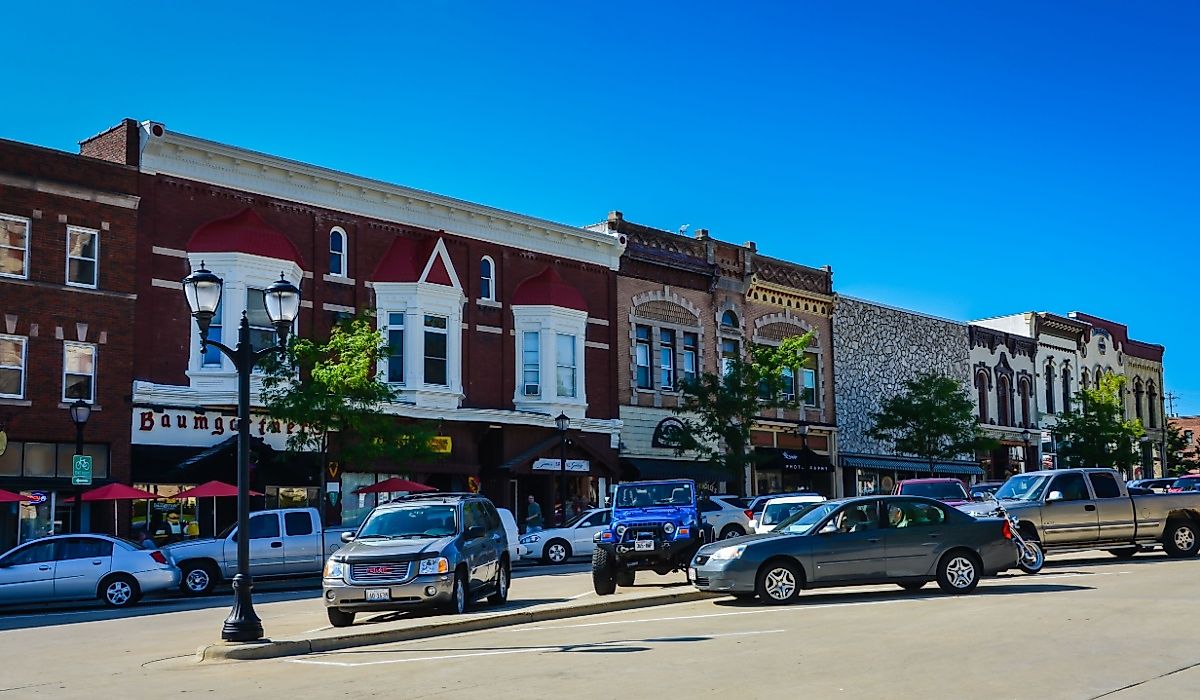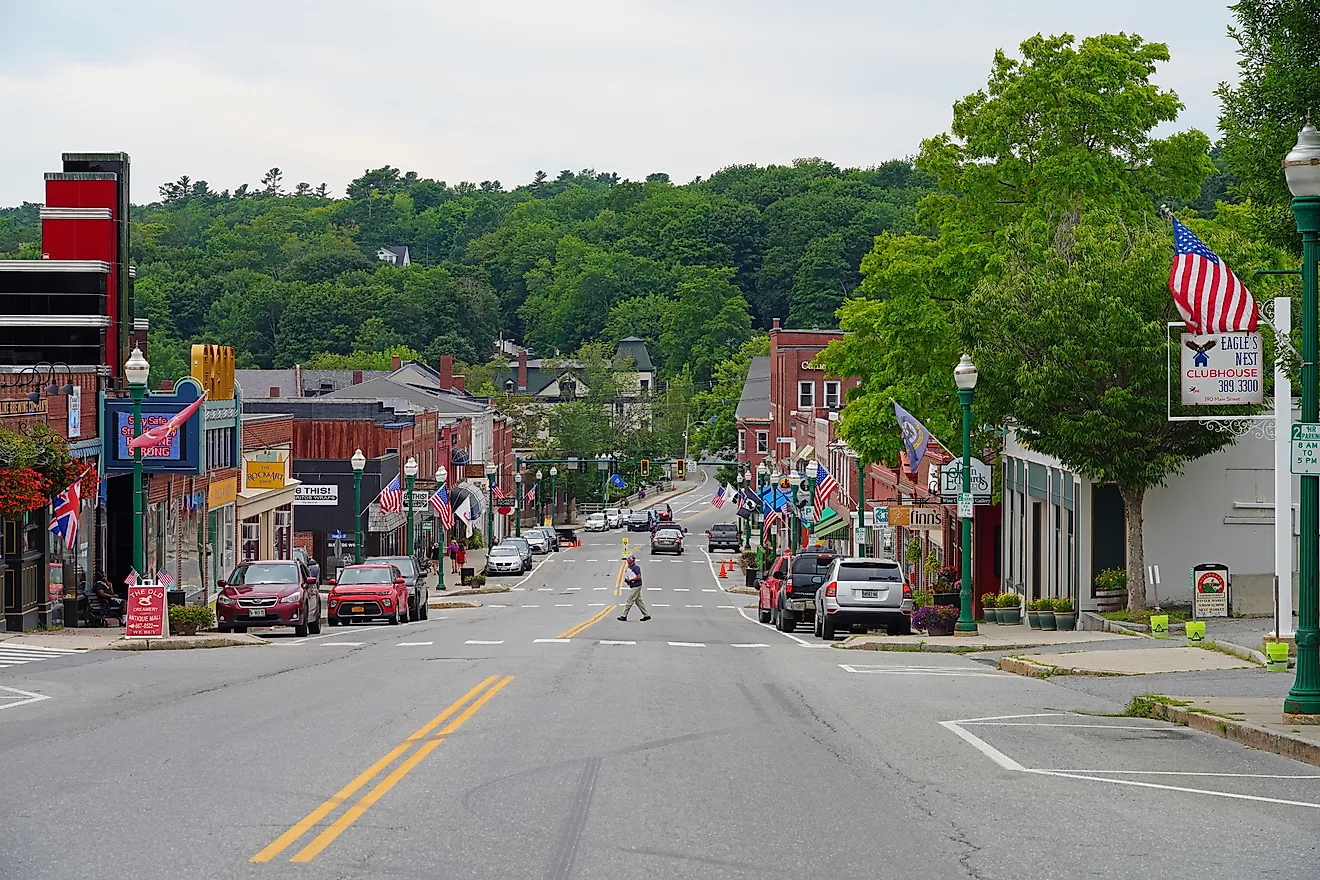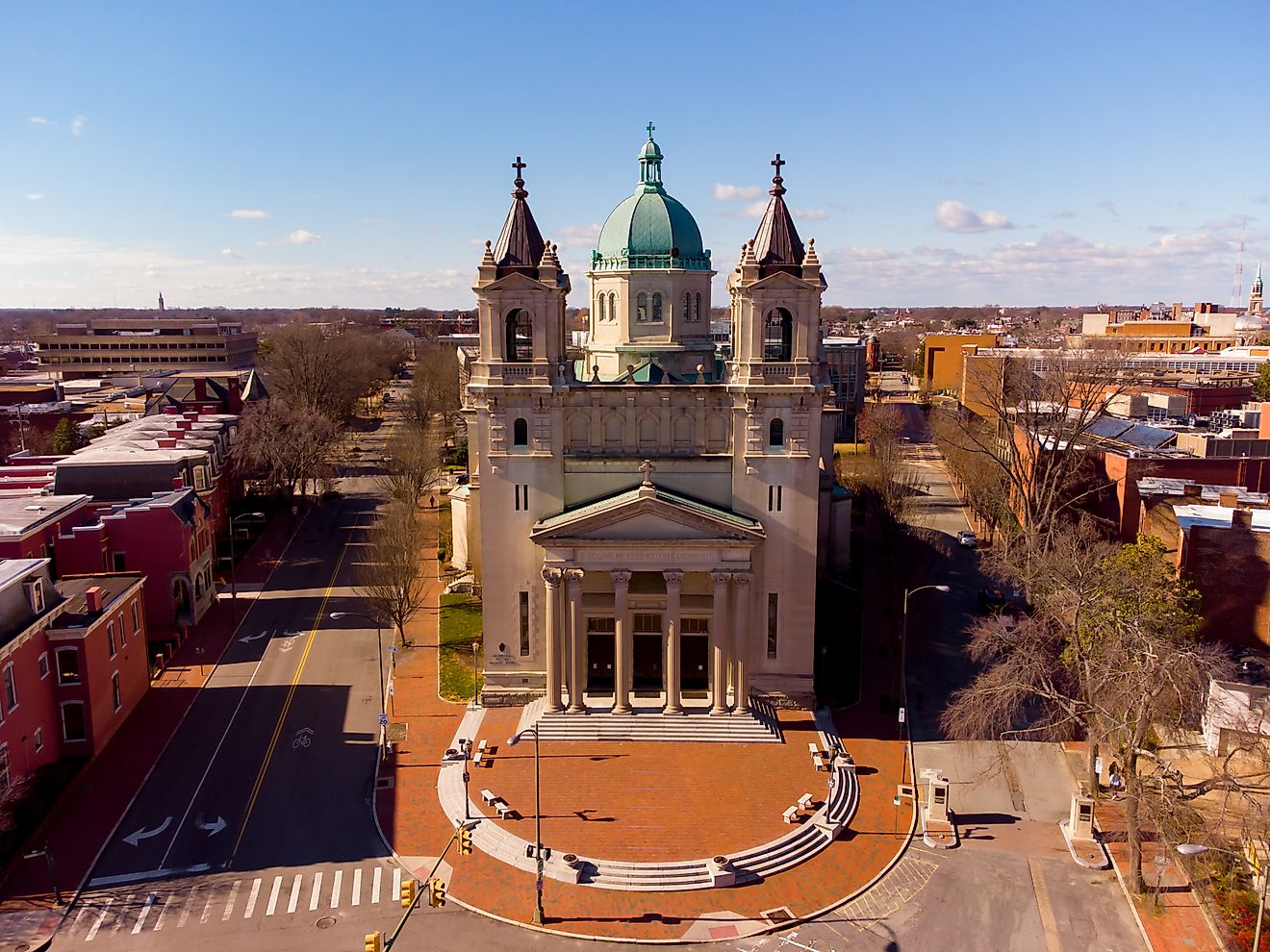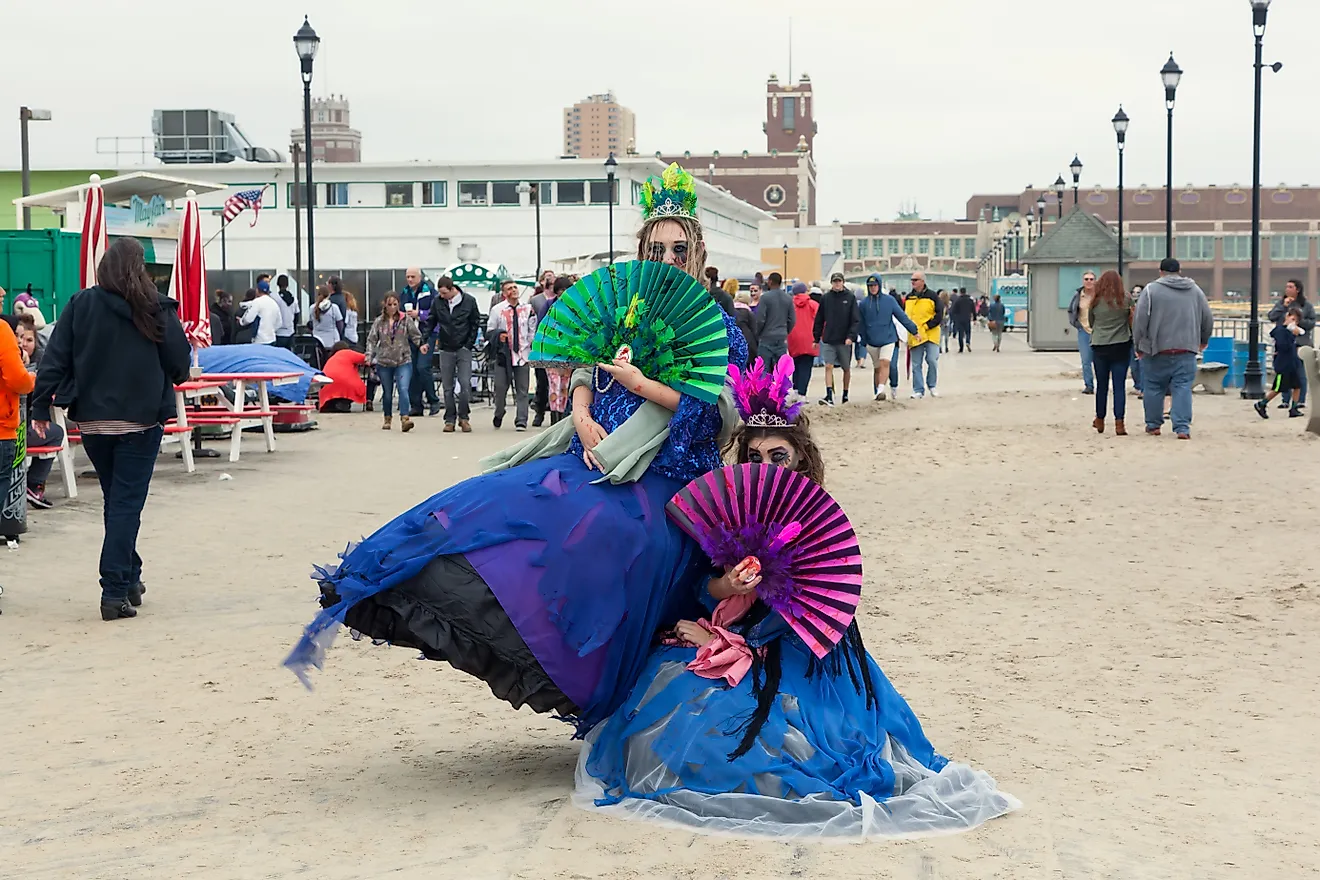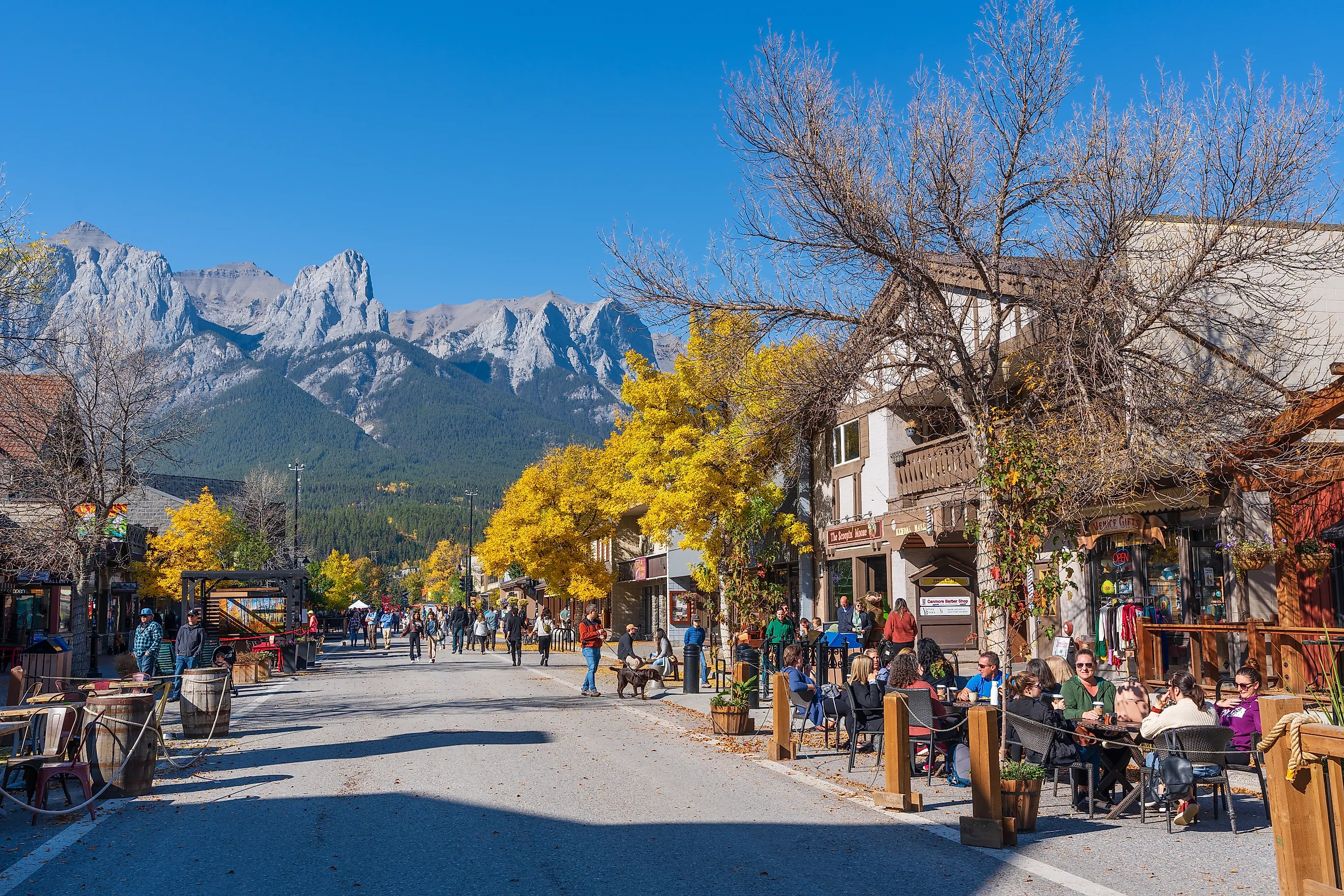
11 Of The Most Adorable Small Towns In Alberta
Alberta's adorable small towns reward visitors with memorable experiences and unexpected discoveries. These eleven communities demonstrate that charm and appeal exist throughout Alberta, not just in its major cities. Each location offers distinct attractions that reflect its geography, history, and cultural heritage while maintaining the warm hospitality that characterizes small-town life. Whether travelers seek outdoor adventure in the foothills, frontier history on the prairies, or cultural exploration in historic settlements, they will fall in love with all of them. Visitors will gain a deeper appreciation for Alberta's diversity and the communities that have shaped the province's character across generations.
Banff
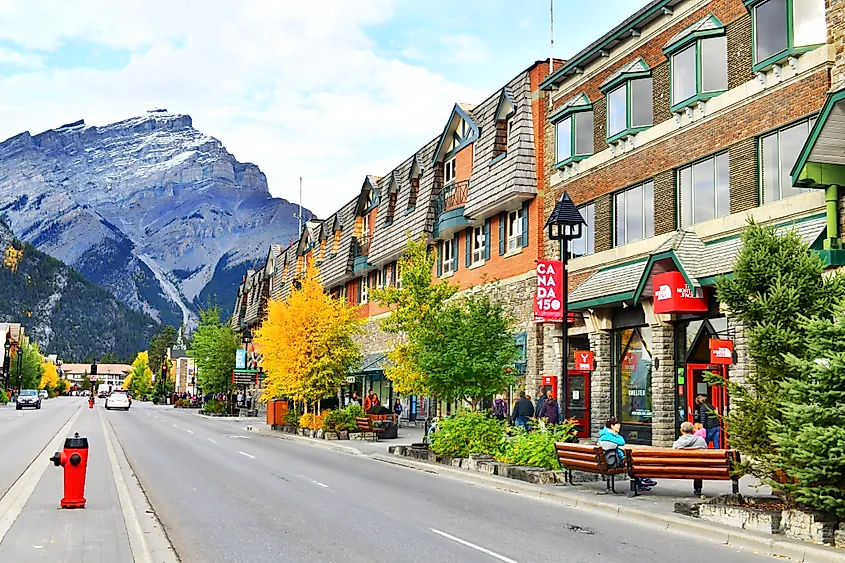
Banff has often been described as one of the most beautiful small towns in Alberta and a top tourist destination in Canada. The town serves as the gateway to Banff National Park, where turquoise lakes and snowy peaks offer postcard-worthy photographs at every turn. Adventurers flock to this Rocky Mountain paradise all year. Visitors can begin their exploration at Lake Louise, where glacial waters reflect the surrounding mountains in shades of blue and green. The lake's iconic Fairmont Chateau stands on the shoreline, offering a popular backdrop for social media photographs and leisurely walks along the water's edge.
Moraine Lake presents an equally inspiring scene, with its famous Valley of the Ten Peaks attracting photographers from around the globe. After soaking in these natural wonders, travelers can ride the Banff Gondola to the summit of Sulphur Mountain, where views stretch across six mountain ranges and the Bow Valley below. Culminate your day with a relaxing soak in the Banff Upper Hot Springs, where you will encounter local residents and tourists alike, soothing tired muscles.
Canmore
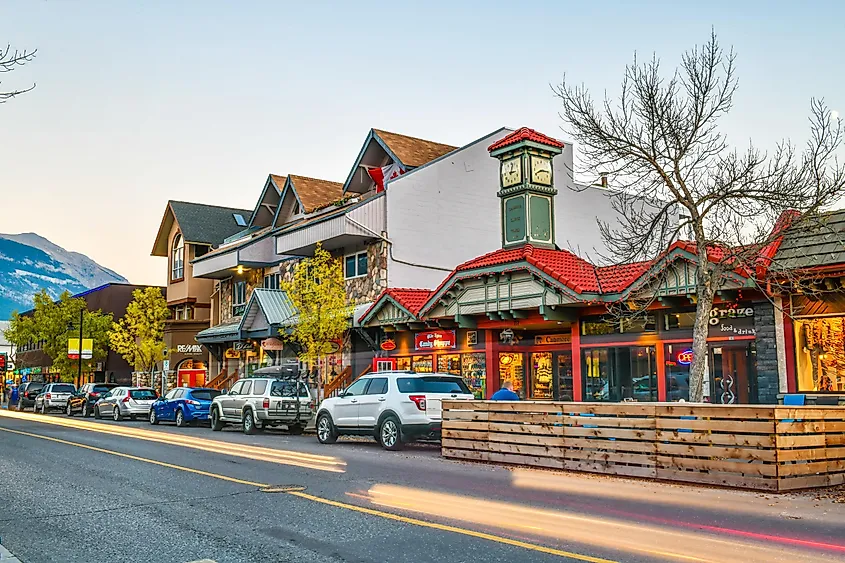
Located just outside Banff National Park, Canmore has transformed from a coal mining town into a haven for artists, athletes, and nature lovers who appreciate its more chill atmosphere compared to its famous neighbor. Mountains surround the town on three sides, creating a dramatic setting that will inspire you.
Hikers can challenge themselves on the trail to Ha Ling Peak, where steep switchbacks reward climbers with views of the Bow Valley and surrounding ranges. For those seeking gentler pursuits, the Canmore Nordic Centre Provincial Park offers trails that wind through forests and meadows, showing the area's natural beauty without the demanding elevation gain. Art lovers discover the town's creative spirit along Main Street, where galleries like the Elevation Gallery display works from local and regional artists who draw inspiration from the mountain landscape. History buffs explore the Canmore Museum, which chronicles the town's coal mining heritage and geological significance through interactive exhibits.
Jasper
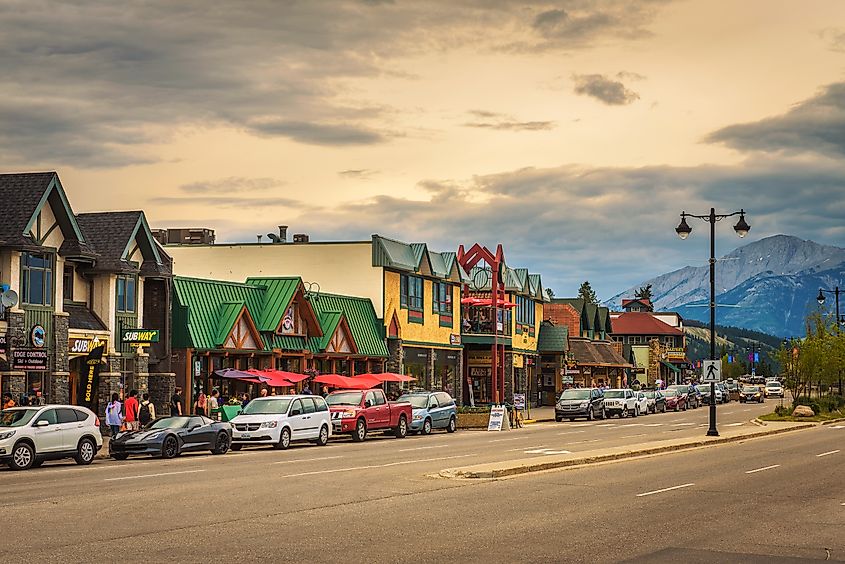
Jasper has a quieter, more rustic character than Banff, attracting visitors who seek solitude and less crowded natural environments. Wildlife sightings occur regularly in this small town, with elk, bighorn sheep, and occasionally bears wandering through town, reminding everyone of nature's proximity. Adventurers journey to Maligne Lake, the largest natural lake in the Canadian Rockies, where Spirit Island has become one of the most photographed locations in Canada. The emerald waters and surrounding peaks create scenes of beauty that captivate photographers of all ages.
Visitors can drive along the Icefields Parkway to the Columbia Icefield, where they walk on ancient ice at the Athabasca Glacier and learn about glaciology at the Glacier Skywalk. Those who prefer terrestrial adventures hike to Maligne Canyon, where rushing waters have carved intricate formations over millennia. After days spent exploring wilderness areas, stargazers can gather at the Jasper Planetarium or venture into the dark sky preserve, where the absence of light pollution reveals the Milky Way with clarity, making Jasper one of the world's premier astronomical destinations.
Cochrane

Overlooking the Bow River valley, Cochrane boasts a folksy charm found only in small Western towns. The town's official motto is "How The West Is Now". The community proudly celebrates its ranching roots while embracing development that respects its historical character. Mountains rise to the west, providing a backdrop that reminds residents and visitors of the town's privileged location.
The Cochrane Ranche Historic Site preserves the location of one of Alberta's earliest and largest ranches, where trails and restored buildings tell the story of the Canadian cattle industry's beginnings. Visitors learn about pioneer life through informative displays and seasonal programs that bring history to life. From this historical site, outdoor enthusiasts head to Glenbow Ranch Provincial Park, where trails wind through river valleys, rolling hills, and native grasslands, offering stunning views of the Rocky Mountains. The town's Western character takes center stage at MacKay's Ice Cream, a local institution since 1948 that draws crowds for its handmade ice cream and friendly atmosphere that perfectly captures Alberta.
Okotoks
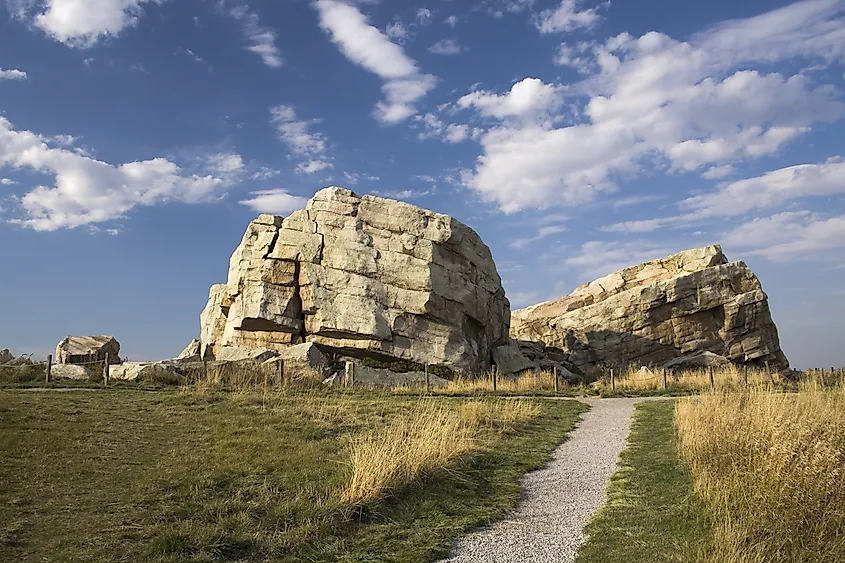
The town's name derives from the Blackfoot word "ohkotok," meaning rock, referencing the massive erratic boulder that serves as the community's most famous landmark. Despite its proximity to Calgary, Okotoks maintains a distinct identity and slower pace that appeals to families and retirees seeking quality of life. The Big Rock stands as a testament to glacial power, weighing approximately 16,500 tonnes and claiming the title of the world's largest glacial erratic. This massive boulder traveled from Jasper National Park during the last ice age, landing in its current location about 10,000 years ago.
Nature enthusiasts explore the Sheep River Provincial Park, where trails follow the river through cottonwood forests and grassy meadows, offering opportunities for bird watching, fishing, and wildlife observation in a peaceful setting. The town's cultural side shines at the Okotoks Art Gallery, where rotating exhibitions showcase contemporary Canadian artists and provide a venue for community artistic expression.
Drumheller
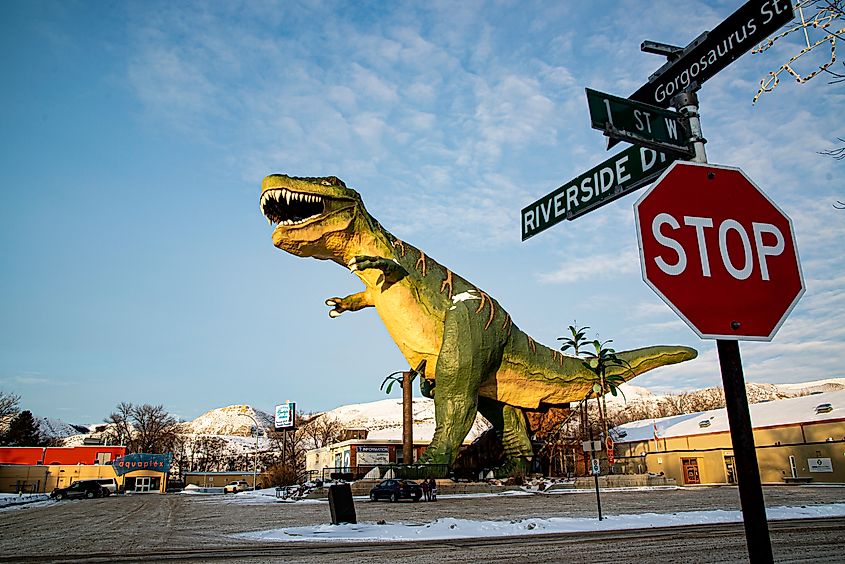
Often called the "Dinosaur Capital of the World," Drumheller sits in the Canadian Badlands, where erosion has exposed 75 million years of geological history. The town's unique landscape features distinctive hoodoos, layered rock formations, and the winding Red Deer River valley that cuts through the prairie. This small community has built its identity around paleontology, creating attractions that educate and entertain visitors of all ages.
The Royal Tyrrell Museum anchors Drumheller's appeal, housing one of the world's largest collections of dinosaur fossils, with over 150,000 specimens and dozens of complete skeletons on display. Visitors spend hours exploring exhibits that bring prehistoric Alberta to life through interactive displays and expertly curated galleries. Building on this paleontological theme, drive the Dinosaur Trail, a scenic loop that connects the museum with the landscape of the badlands and provides numerous viewpoints for photographs. Along this route, families pose next to the World's Largest Dinosaur, an 86-foot-tall Tyrannosaurus rex statue. The journey continues to Horseshoe Canyon, where visitors walk among natural amphitheaters and layered rock formations that display millions of years of sedimentary deposits, creating a landscape that appears more suitable for Mars than the Canadian prairies.
Waterton Park

Waterton Park sits at the entrance to Waterton Lakes National Park, a UNESCO World Heritage Site that forms part of the world's first International Peace Park with Montana's Glacier National Park. Wind-sculpted trees and mountain peaks rising abruptly from the plains give this community a distinctive character that sets it apart from other Rocky Mountain destinations. Visitors explore Waterton Lakes National Park through numerous hiking trails, with the challenging Crypt Lake Trail standing out as one of Canada's most spectacular day hikes. This trail takes adventurers through a tunnel, along cliff edges, and past waterfalls to an alpine lake.
The journey continues with a scenic cruise on Upper Waterton Lake aboard the historic MV International, which crosses the international border into Montana while providing commentary about the area's geology, wildlife, and history. Back on land, travelers drive the Red Rock Canyon Parkway, where a short walk leads to a striking red and green canyon carved by glacial meltwater, offering a geological wonder that photographers find irresistible. The town's cultural heritage comes alive at the historic Prince of Wales Hotel, a Swiss chalet-style structure situated high above the townsite that has welcomed guests since 1927. It offers afternoon tea with views that stretch across the lake and into the surrounding mountain wilderness.
Fort Macleod
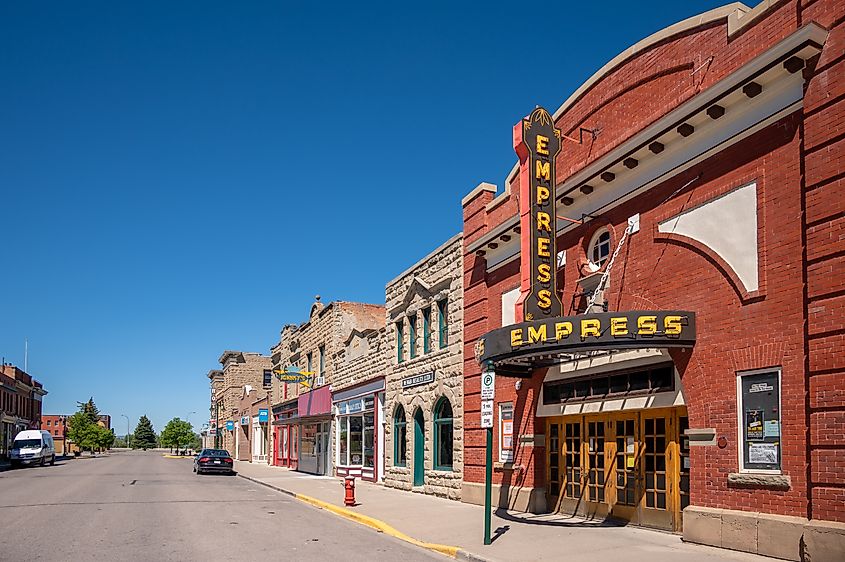
Fort Macleod preserves the legacy of the North-West Mounted Police, who established their first post here in 1874. The community maintains its character through the careful preservation of historic buildings and celebrates its ranching heritage. Main Street retains its late 19th-century architecture, transporting visitors back to the days when this outpost served as a crucial link between Eastern and Western Canada.
The Fort Museum recreates the original North-West Mounted Police fort through authentic buildings and period exhibits that chronicle the force's role in bringing law and order to the Canadian frontier. Costumed interpreters bring history to life through storytelling that engages visitors of all ages. The Fort Macleod Musical Ride presents thrilling performances throughout the summer, where Royal Canadian Mounted Police officers in traditional uniforms execute drills on horseback that have thrilled audiences for generations. Nature beckons just outside town at Head-Smashed-In Buffalo Jump, a UNESCO World Heritage Site where Plains peoples drove buffalo over cliffs for nearly 6,000 years. Here, an award-winning interpretive center explains this sophisticated hunting technique and the cultures that depended on the buffalo for survival.
Crowsnest Pass
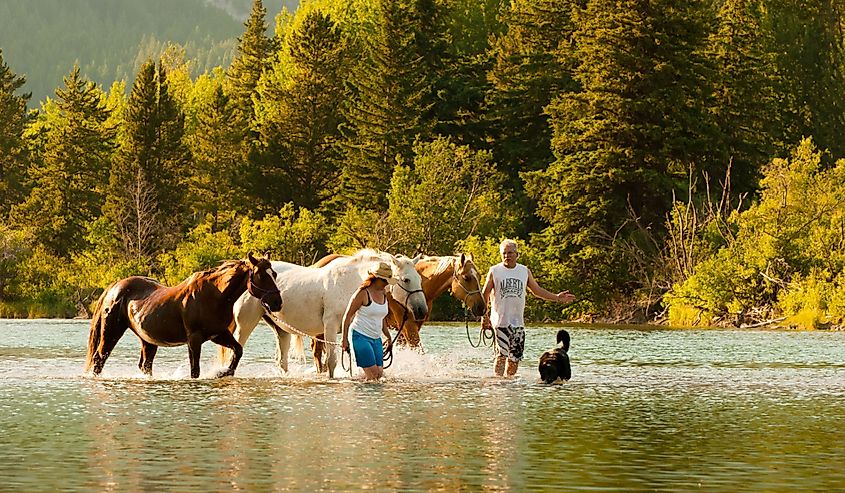
Crowsnest Pass comprises several small communities that share a poignant history. The area's coal mining heritage shapes its identity, with mountain slopes bearing scars from both mining operations and natural disasters that tested early settlers. Hikers tackle the trail up Turtle Mountain, where summit views reward those brave enough to climb the peak that local Indigenous peoples called "the mountain that moves."
The area's mining legacy is reflected at the Bellevue Underground Mine, where guided tours take visitors 1,000 feet into the mountain through actual mine tunnels, where they experience the challenging conditions that miners endured. Outdoor recreation thrives at the nearby Pass Powderkeg Ski Area, where visitors access hiking and skiing trails that wind through alpine meadows and forests, offering a peaceful contrast to the area's historical sites while showcasing the natural beauty that surrounds this resilient community.
Cardston
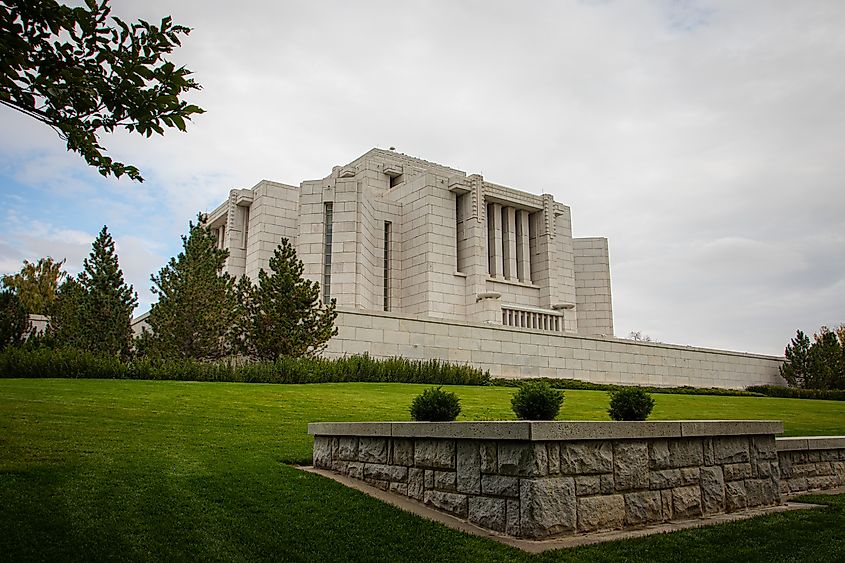
Founded by Mormon pioneers in 1887, Cardston maintains strong connections to its Latter-day Saint heritage while welcoming visitors of all backgrounds to explore its attractions and architecture. The town sits near the Blood Indian Reserve and serves as a cultural crossroads where Mormon and Indigenous histories intersect on the Alberta prairie. Wide streets laid out in the original settlement pattern, along with numerous historic buildings, create an atmosphere that honors the community's pioneer spirit.
The Alberta Temple dominates Cardston's skyline as one of only eight temples built by The Church of Jesus Christ of Latter-day Saints outside the United States prior to World War II. Visitors tour the temple grounds and visitor center to admire the impressive architecture of the granite structure. Automobile enthusiasts discover an unexpected treasure at the Remington Carriage Museum, which houses North America's largest collection of horse-drawn vehicles, with over 250 carriages, wagons, and sleighs displayed in a modern facility that explores the evolution of transportation before the automobile age. The museum's interactive exhibits allow visitors to sit in various vehicles and imagine life in an earlier era.
Bragg Creek
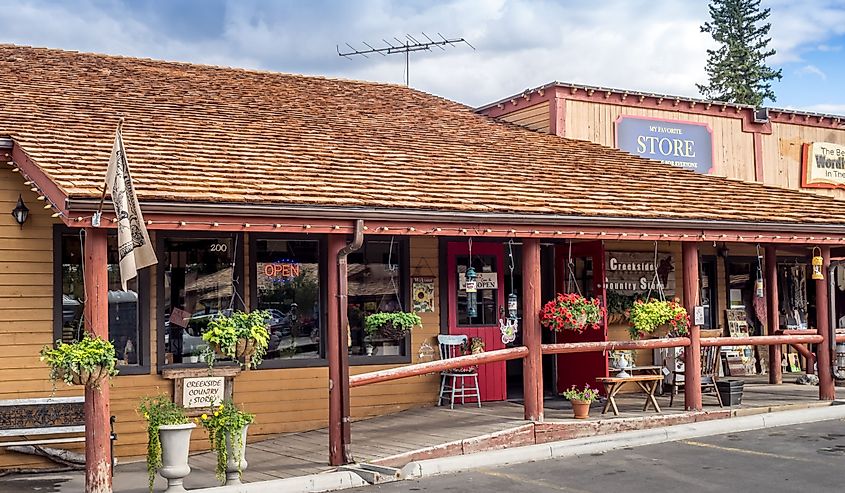
Located west of Calgary, Bragg Creek attracts artists who appreciate the local creative community. The Elbow River flows through the area, providing both beauty and recreational opportunities that change with the seasons. Despite its small size, the town offers a surprising array of shops, galleries, and restaurants that give it a sophistication uncommon in communities of similar size. Kananaskis Country surrounds Bragg Creek, offering endless hiking, mountain biking, and horseback riding opportunities through the provincial parkland that protects forests, mountains, and watersheds just an hour from Calgary. The extensive trail network accommodates all skill levels, from gentle riverside walks to challenging mountain ascents.
Art lovers explore the Bragg Creek Trading Post and numerous galleries along White Ave, where local artisans display paintings, sculptures, pottery, and jewelry inspired by the surrounding mountain landscape. The creative spirit is evident in live music performances at various venues throughout the hamlet. Wildlife viewing opportunities abound at Bragg Creek Provincial Park, where interpretive trails wind through the forest along the Elbow River, allowing patient observers to spot white-tailed deer, moose, and numerous bird species that make the riparian habitat their home.
The Timeless Spirit of Alberta
From Alberta’s tranquil lakeside communities to its mountain valleys, the province tells a story rooted in resilience and connection. Each town reveals a chapter of Alberta’s rich past, shaped by Indigenous Peoples, early settlers, and generations of farmers and ranchers who have left their mark on the land. These small communities still embody the warmth, creativity, and spirit of Prairie life, where history and nature intertwine in authentic, meaningful ways. Whether you’re travelling from afar or exploring Canada, Alberta offers timeless charm and countless reasons to return.
